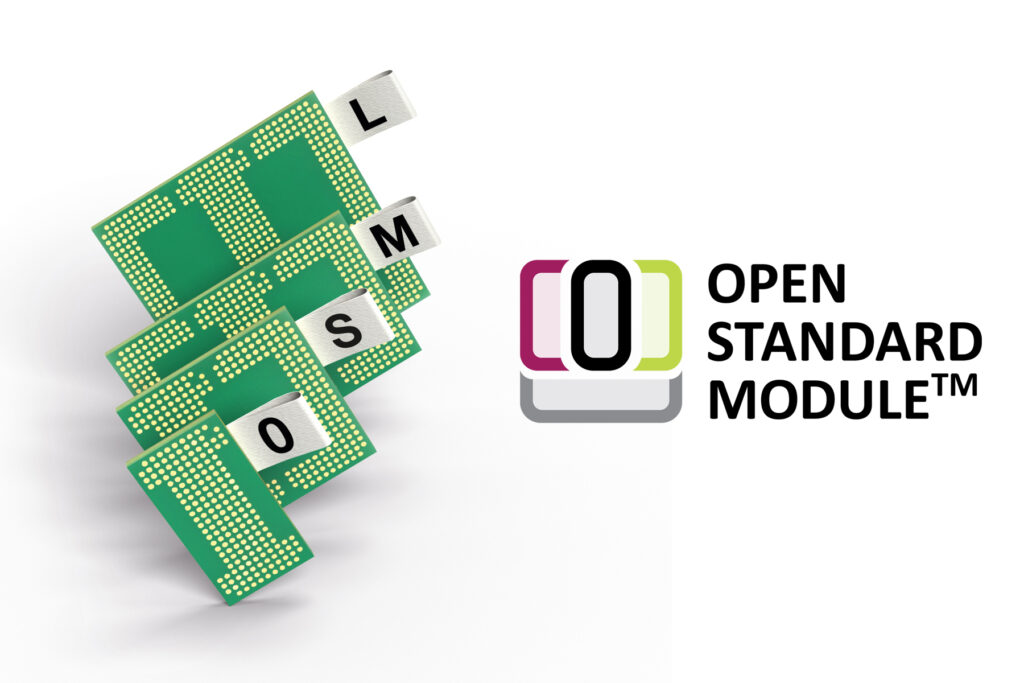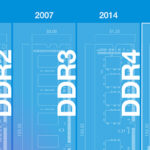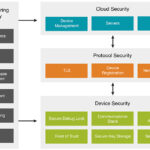 SGET e.V. announces release 1.0 of the new OSM Computer-on-Module standard. OSM, which is short for Open Standard Module, defines one of the first standards for directly solderable and scalable embedded computer modules. It also marks a new milestone in the miniaturization of modular COM/carrier designs, replacing credit card-sized modules with postage-stamp-sized ones. The new specification aims to standardize the footprint and interface set of low-power and ultra-low-power application processors based on MCU32, ARM, and x86 architectures across different sockets, manufacturers, and architectures. Target applications of the new module standard include IoT-connected embedded, IoT, and edge systems that run open-source operating systems and are used in harsh industrial environments.
SGET e.V. announces release 1.0 of the new OSM Computer-on-Module standard. OSM, which is short for Open Standard Module, defines one of the first standards for directly solderable and scalable embedded computer modules. It also marks a new milestone in the miniaturization of modular COM/carrier designs, replacing credit card-sized modules with postage-stamp-sized ones. The new specification aims to standardize the footprint and interface set of low-power and ultra-low-power application processors based on MCU32, ARM, and x86 architectures across different sockets, manufacturers, and architectures. Target applications of the new module standard include IoT-connected embedded, IoT, and edge systems that run open-source operating systems and are used in harsh industrial environments.
Like all Computer-on-Module standards, OSM modules simplify and accelerate the design-in of processors. At the same time, applications become processor-agnostic, which makes them scalable and future-proof. In addition, they protect NRE investments and extend the long-term availability, ultimately increasing the return on investment and sustainability of embedded systems. Next to these advantages – which OSM modules have in common with all earlier Computer-on-Module specifications – the OSM specification offers an extra level of ruggedness thanks to the BGA design and automated surface mount technology (SMT), which can further reduce production costs in series production.
All OSM modules are also published and licensed under Creative Commons Plus (CC+) dual license. This allows an open licensing model, such as the Creative Commons Attribution-ShareAlike license (CC B-SA 4.0) for a defined set of materials, components, and software, and a commercial license for everything not included in this set. This ensures that development data, such as block diagrams, libraries, and BOMs resulting from the development of OSM modules, will be publicly available. Yet it is still possible to license the Intellectual Properties (IP) of a carrier board design commercially without violating the open-source idea.
The new OSM specification expands the portfolio of SGET module specifications with solderable BGA mini-modules that are significantly smaller than previously available modules: Even the largest OSM module, measuring 45x45mm, is 28% smaller than the µQseven (40x70mm), a standard also hosted by SGET, and 51% smaller than SMARC (82x50mm). Other module sizes in the new OSM specification are even smaller: OSM Size-0 (Zero) has the smallest footprint with 188 BGA pins on 30x15mm. OSM Size-S (Small) measures 30x30mm with 332 pins, OSM Size-M (Medium) offers 476 pins on 30x45mm, and Size-L (Large) – as mentioned earlier – measures 45x45mm with an impressive 662 BGA pins. SMARC, by comparison, specifies 314 pins and Qseven 230. This means that BGA design makes it possible to implement significantly more interfaces on a smaller footprint – which is groundbreaking, both in terms of miniaturization and the increasing complexity of requirements, and constitutes another unique advantage of the new OSM standard.
The interfaces vary in type and design depending on the size of the OSM modules. In maximum configurations, OSM modules provide all functions that make up an open programmable embedded, IoT, or edge system, including GUI. Modules from Size-S upwards offer video interfaces for up to 1x RGB and 4-channel DSI. Size-M modules can additionally support 2x eDP/eDP++, and Size-L adds 1x LVDS interface for graphics. So all in all, maximum configurations can provide up to 5 video outputs in parallel. All modules from Size-S upwards further offer a 4-channel Camera Serial Interface (CSI). Size-L modules provide up to 10 PCIe lanes for quick connection of peripherals; Size-M offers 2x PCIe x1, and Size-S 1x PCIe x1. In view of their extremely miniaturized footprint, Size-0 modules do not feature any of the I/Os mentioned so far but offer all the interfaces listed in the following. The OSM specification provisions up to 5x Ethernet for system-to-system communication. In addition, all modules have what is called a communication area, providing 18 pins for antenna signals for wireless communication or the integration of field buses. Next, there are up to 4x USB 2.0 or 2x USB 3.0 (only in Size-L), up to 2x CAN, and 4x UART. Flash storage media can be connected via UFS. Up to 19 pins are further available for manufacturer-specific signals. Finally and to complete the feature set, there are up to 39 GPIOs, SPI, I2C, I2S, SDIO, and 2x analog inputs. As a safeguard for the future and to ensure that any future expansions are backward compatible, up to 58 pins are reserved for future purposes.





Leave a Reply